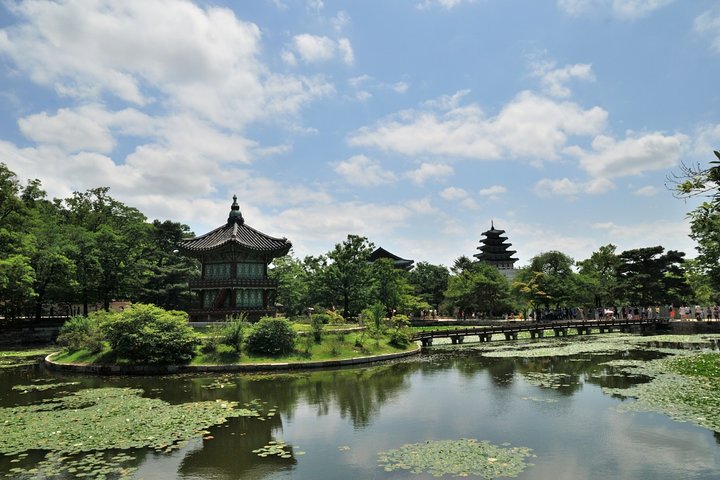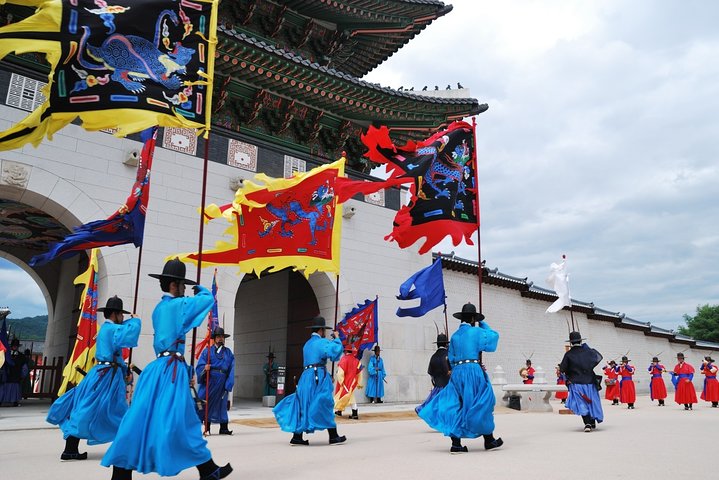Exploring Seoul’s Architectural Harmony: A Journey Through Time
As a cultural consultant with a passion for Asian architecture, I embarked on a journey through Seoul’s Gangbuk area to explore its rich history and traditional Korean architecture. Join me as I delve into the stories behind Seoul’s iconic structures and discover the soul of this vibrant city.
A Journey Through Time: Seoul’s Architectural Tapestry
Seoul, a city where the past and present coexist in a harmonious dance, offers a unique opportunity to explore its rich history and vibrant modernity. As someone who has always been fascinated by the intricate details of Asian architecture, I was eager to delve into the heart of Seoul’s Gangbuk area, a place where traditional Korean architecture stands proudly amidst the city’s modern skyline. My journey began with the Korean History & Heritage Tour, a meticulously curated experience that promised to unravel the stories behind Seoul’s most iconic structures.
The Majesty of Gyeongbokgung Palace
Our first stop was the Gyeongbokgung Palace, a magnificent testament to the grandeur of the Joseon Dynasty. As we arrived, the Changing of the Guard Ceremony was in full swing, a vibrant display of tradition and discipline. The palace’s architecture, with its sweeping roofs and intricate carvings, spoke volumes of the era’s artistic prowess. Walking through the palace grounds, I couldn’t help but draw parallels to the Japanese palaces I had visited, each structure telling its own story of power and legacy.
Our guide, Rob, was a wellspring of knowledge, weaving tales of the palace’s history with anecdotes that brought the past to life. His passion for Korean architecture was infectious, and I found myself captivated by his insights into the design elements that defined the era. As we ventured deeper into the palace, I marveled at the seamless blend of nature and architecture, a hallmark of traditional Korean design.
Immersing in the Soul of Seoul
The tour continued with a visit to the National Folk Museum of Korea, where we explored the life cycle of a Korean, from birth to the afterlife. The exhibits were a poignant reminder of the cultural richness that defines Korea, and I was struck by the similarities and differences between Korean and Japanese customs. This immersive experience was a testament to the power of storytelling, as each artifact whispered tales of the past.
Our journey then led us to Bukchon Hanok Village, a living museum where traditional Korean houses, or hanoks, stand as a testament to Seoul’s architectural heritage. Walking through the narrow alleys, I felt a sense of nostalgia, reminiscent of the traditional neighborhoods I had explored in Kyoto. The village was alive with the sounds of daily life, a reminder that history is not just a relic of the past but a living, breathing entity.
A Modern Twist on Tradition
As the day drew to a close, we found ourselves in Insadong, a vibrant hub of art and culture. The alleyways, lined with antique shops and galleries, were a treasure trove of Korean artistry. Here, the past and present converged, as traditional crafts met contemporary design. It was a fitting end to a day steeped in history, a reminder that Seoul is a city that embraces its heritage while forging a path into the future.
The Korean History & Heritage Tour was more than just a journey through Seoul’s architectural wonders; it was an exploration of the soul of a city that has stood the test of time. As I reflected on the day’s experiences, I was reminded of the importance of preserving cultural heritage, a sentiment that resonates deeply with my own work as a cultural consultant. This tour was a testament to the power of architecture to tell stories, to connect us to the past, and to inspire future generations.













































